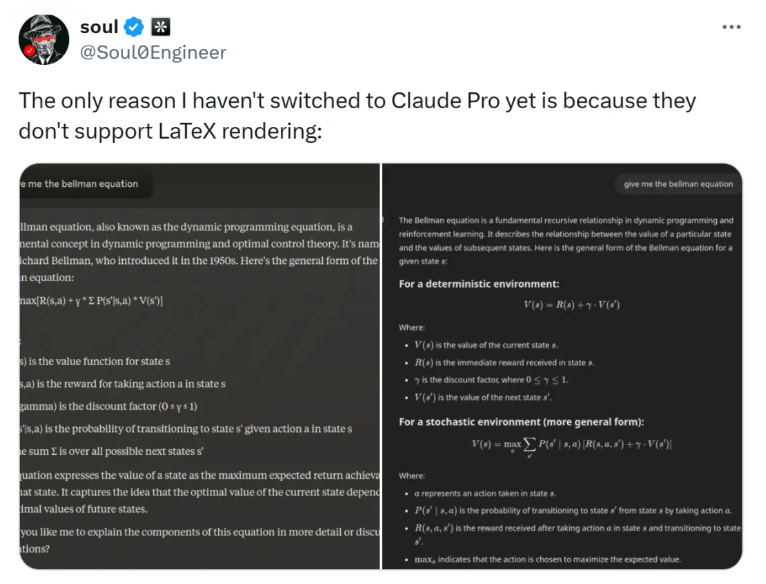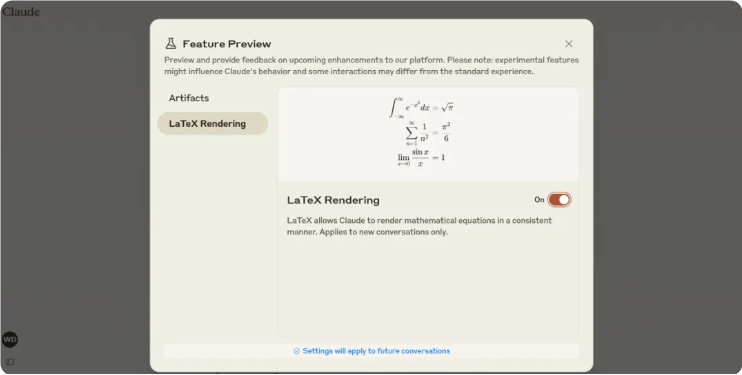Anthropic's large AI model Claude has received a major update - the LaTeX formula rendering function is officially launched! This is undoubtedly a huge boon for academic researchers, scientific workers, and professionals who often need to deal with mathematical formulas. As a recognized tool for typesetting mathematical formulas, the addition of LaTeX will significantly improve Claude's accuracy, clarity and professionalism in mathematical expression, making complex mathematical formulas more elegant and easier to understand. This article will delve into the highlights of Claude’s update and its profound impact on user experience and future development.
Accurate expression of mathematical formulas in academic, technical documentation and professional fields has always been key. LaTeX, the leader in typesetting, has always been the best choice for expressing mathematical formulas in technology and academia. Now, Claude, a large AI model carefully built by Anthropic, has finally received the blessing of LaTeX formula rendering, bringing the clarity and professionalism of mathematical expression to a higher level.

Main highlights:
Format consistency: Claude can now display mathematical equations and expressions in a unified format, making results standardized and easier to understand.
Improved answer clarity: When faced with mathematical problems that need to be answered, the formulas output by LaTeX make the answers clearer and clear at a glance.
Meet academic and professional needs: For those users who frequently deal with mathematical and scientific symbols, the addition of LaTeX is undoubtedly a great boon.

The design of the functional interface is also commendable. It is intuitive and easy to use, allowing users to quickly generate complex mathematical expressions through simple command input.
The official example shows how Claude uses LaTeX rendering to explain Gaussian integral, solution to the Basel problem and small-angle approximation of sine, demonstrating the power of LaTeX in expressing mathematical concepts.
The trial experience of the Heart of the Machine further confirms this point. After turning on the LaTeX function, the display effect of the equation is significantly improved, which is in sharp contrast with that when LaTeX is not turned on.
The response from netizens, especially academic workers who often need to insert mathematical formulas into documents, was enthusiastic about this long-awaited feature.
With the addition of LaTeX rendering function, users' expectations for Claude have also increased. They hope that Claude can launch more functions, such as supporting spreadsheets, web browsing, etc., to meet a wider range of professional needs.
This update of Claude is not only an improvement of product functions, but also a positive response to user needs. With the addition of LaTeX formula rendering function, Claude's application prospects in academic and professional fields will undoubtedly be broader, becoming the new favorite of academic workers and professionals.
Claude's update fully demonstrates its emphasis on user needs and its commitment to continuous product improvement. I believe that in the future, Claude will occupy a more important position in the field of artificial intelligence with its powerful functions and continuously optimized user experience. The addition of LaTeX rendering function is just the beginning. We look forward to more surprising breakthroughs from Claude in the future!